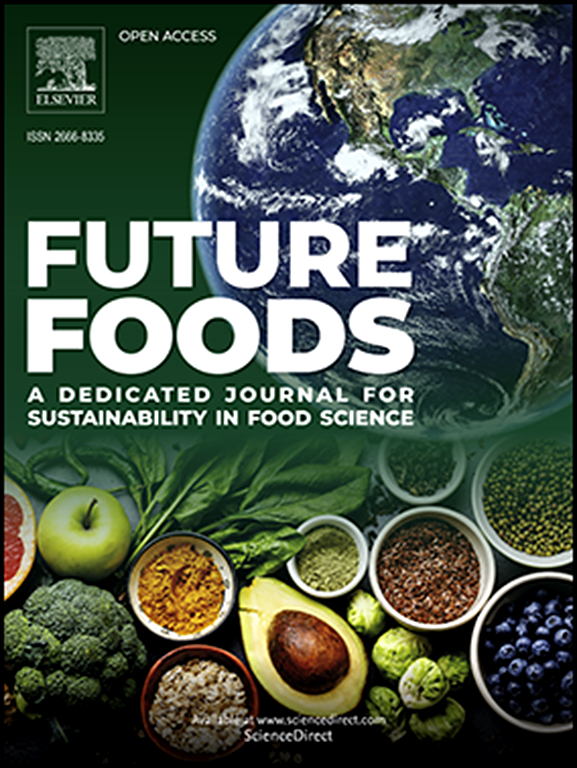Thermo-resistant films based on core-shell nanofibers loaded with phase change materials for butter packaging; fabrication, characterization, application
IF 7.2
Q1 FOOD SCIENCE & TECHNOLOGY
引用次数: 0
Abstract
Shelf life of butter, as an important dairy product in the human diet, can be limited due to light, temperature, and humidity during storage, which makes this product susceptible to oxidation, lipolysis, and microbial spoilage. Therefore, to address challenges related to the shelf life of butter by enhancing the thermo-resistance of its packaging and increasing its stability at ambient temperature, in this research, thermoplastic polyurethane (TPU) nanofibers containing bio-waxes of soy, coconut, carnauba, bees, and spermaceti as phase change materials were designed through coaxial/melt electrospinning technique. Our results revealed that when waxes were loaded inside the nanofibers, value became lower than pure waxes. Core-shell nanofiber consisting of 15 % (w/w) TPU (as the shell) and 30 % (w/v) carnauba wax (as the core) with an average diameter of 241.1 ± 7 nm was chosen as the best sample due to good thermal properties (i.e., Tm = 54.7 °C, = 88.6 , and ΔCp = 8.16 ) and the highest nanoencapsulation ratio. The designed nanofibers can be used as a thin and effective insulating layer, enhancing the thermo-resistance of traditional packaging. They successfully protect butter against environmental changes (i.e., temperature fluctuations), leading to a significant extension of its shelf life.

求助全文
约1分钟内获得全文
求助全文
来源期刊

Future Foods
Agricultural and Biological Sciences-Food Science
CiteScore
8.60
自引率
0.00%
发文量
97
审稿时长
15 weeks
期刊介绍:
Future Foods is a specialized journal that is dedicated to tackling the challenges posed by climate change and the need for sustainability in the realm of food production. The journal recognizes the imperative to transform current food manufacturing and consumption practices to meet the dietary needs of a burgeoning global population while simultaneously curbing environmental degradation.
The mission of Future Foods is to disseminate research that aligns with the goal of fostering the development of innovative technologies and alternative food sources to establish more sustainable food systems. The journal is committed to publishing high-quality, peer-reviewed articles that contribute to the advancement of sustainable food practices.
Abstracting and indexing:
Scopus
Directory of Open Access Journals (DOAJ)
Emerging Sources Citation Index (ESCI)
SCImago Journal Rank (SJR)
SNIP
 求助内容:
求助内容: 应助结果提醒方式:
应助结果提醒方式:


